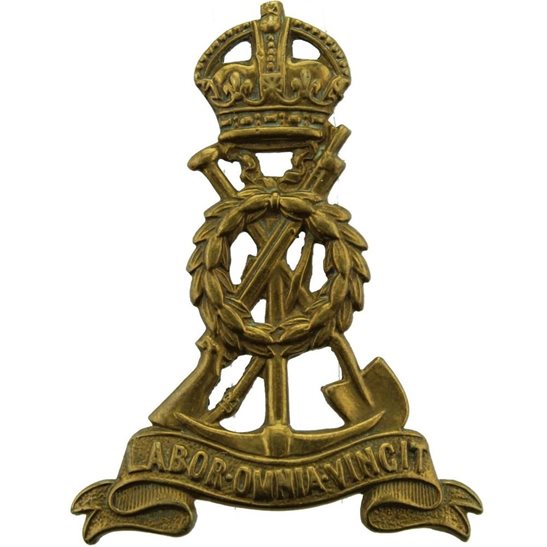Personal Details
Born: 27 June 1881 and baptised 15 July same year.
Family: Son of Alfred and Sarah Crewe and brother to Mary. In 1913 he married Joyce M Hughes in Atherstone, Warwickshire and together they had two children, William A and Vera J, both born in Whitchurch.
Residence: In both 1891 and 1901 the family were living at 17 Yardington Street, Whitchurch, Shropshire. By 1911 the family had relocated to 30 Park Road, also in Whitchurch. At the time of the 1939 Register Alfred and Joyce were living at 43 Wrexham Road, Whitchurch, Shropshire.
Employment: Census records state that at the age of 19 William was a postman and ten years later in 1911 he was still employed in the same job. The British Postal Service Appointment Books have entries for Wm Thos Crewe as an assistant postman in 1904 and as a postman in 1906. In the 1939 Register his occupation was listed as postman.
Died: 1969 in Whitchurch, aged 88.
Military Details
Regiment: Labour Corps (previously King’s Shropshire Light Infantry)
Rank: Private
Service Number: 394165 (previously 24500)
Date of Enlistment: Not known
Date of Discharge: Not known
Reason for Discharge: Demobilisation
William was awarded the Campaign Medals (British War Medal and Victory Medal)

The British War Medal (also known as 'Squeak') was a silver or bronze medal awarded to officers and men of the British and Imperial Forces who either entered a theatre of war or entered service overseas between 5th August 1914 and 11th November 1918 inclusive. This was later extended to services in Russia, Siberia and some other areas in 1919 and 1920. Approximately 6.5 million British War Medals were issued. Approximately 6.4 million of these were the silver versions of this medal. Around 110,000 of a bronze version were issued mainly to Chinese, Maltese and Indian Labour Corps. The front (obv or obverse) of the medal depicts the head of George V. The recipient's service number, rank, name and unit was impressed on the rim.
The Allied Victory Medal (also known as 'Wilfred') was issued by each of the allies. It was decided that each of the allies should each issue their own bronze victory medal with a similar design, similar equivalent wording and identical ribbon. The British medal was designed by W. McMillan. The front depicts a winged classical figure representing victory. Approximately 5.7 million victory medals were issued. Interestingly, eligibility for this medal was more restrictive and not everyone who received the British War Medal ('Squeak') also received the Victory Medal ('Wilfred'). However, in general, all recipients of 'Wilfred' also received 'Squeak' and all recipients of The 1914 Star or The 1914/1915 Star (also known as 'Pip') also received both 'Squeak' and 'Wilfred'. The recipient's service number, rank, name and unit was impressed on the rim.

